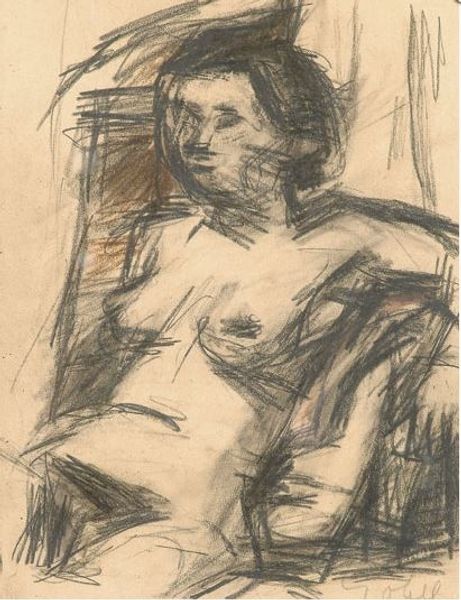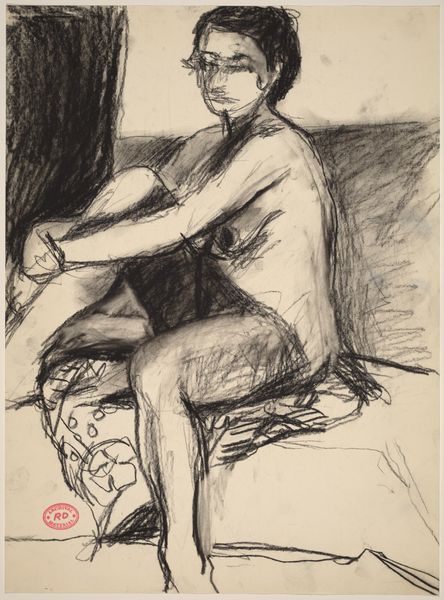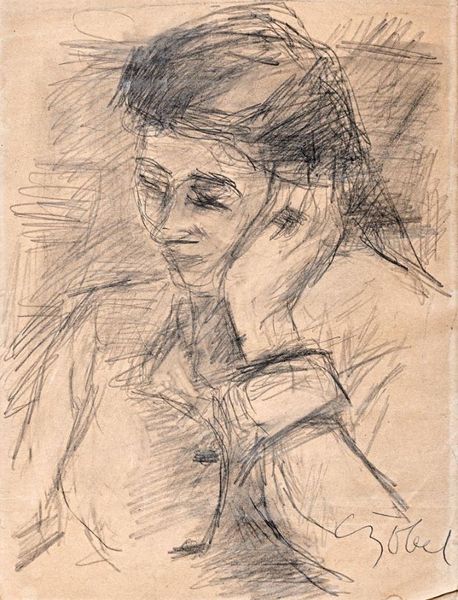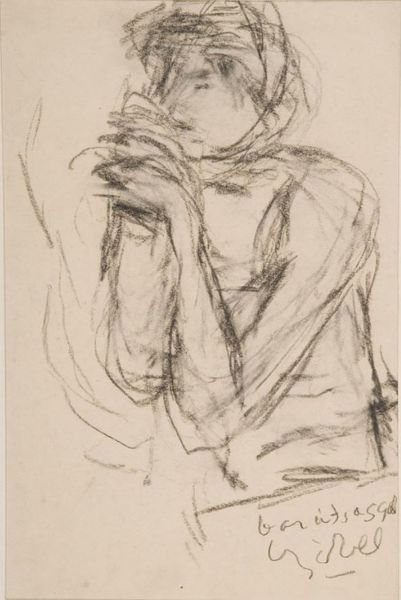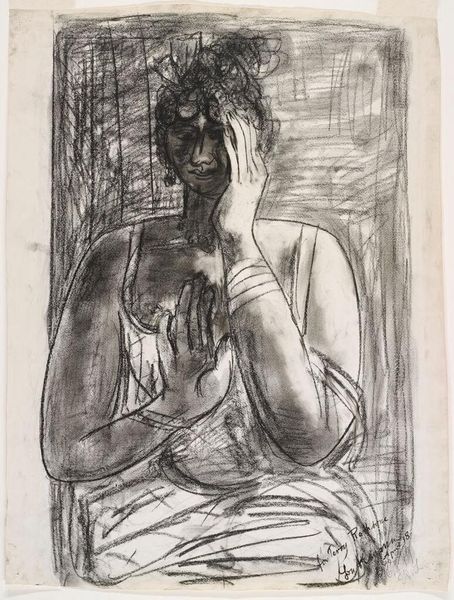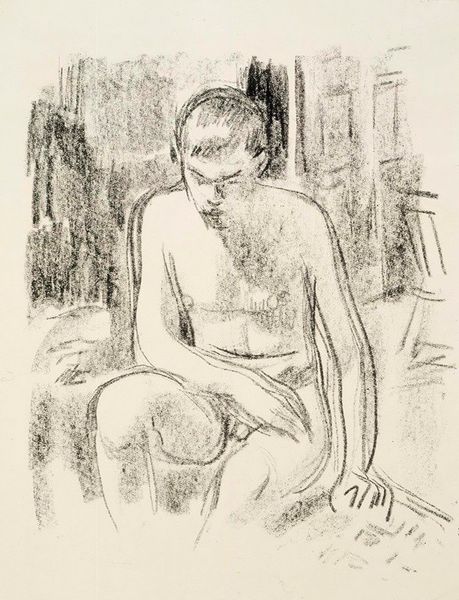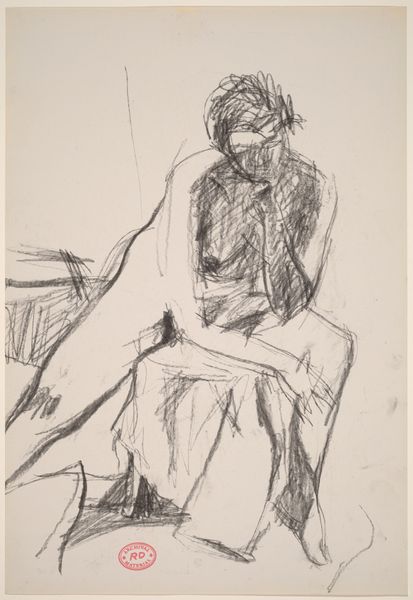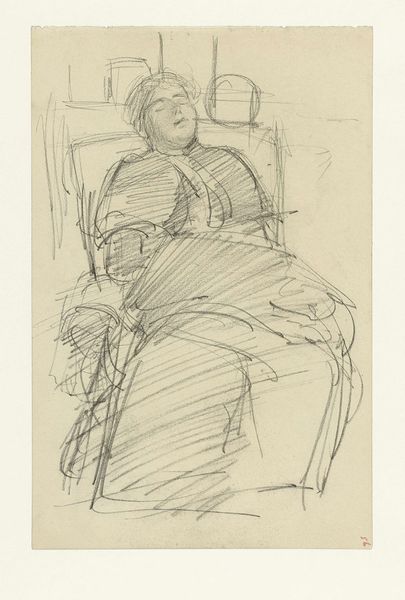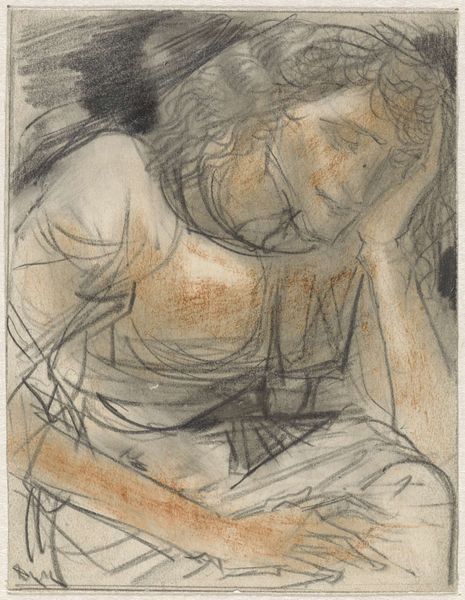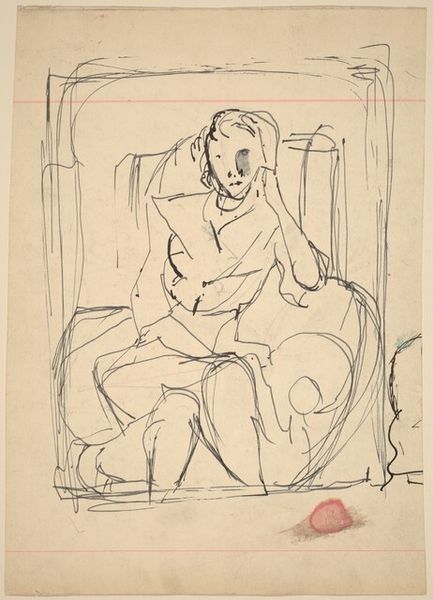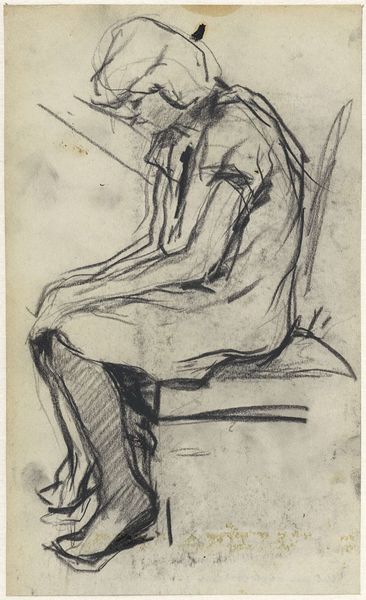
drawing, charcoal
#
portrait
#
drawing
#
figuration
#
expressionism
#
charcoal
Copyright: Bela Czobel,Fair Use
Curator: We are looking at "Girls in the Studio" or, as it’s known in Hungarian, “Lány a Műteremben,” by Béla Czóbel. The charcoal and subtle red chalk create an intriguing tension. Editor: My first impression is a feeling of unease. The rapid, scratchy lines give a sense of urgency, or maybe just deep introspection on the sitter's part. It’s almost confrontational despite the faceless figure. Curator: Czóbel's background plays a significant role in understanding his aesthetic. He was a key figure in the Hungarian avant-garde, grappling with expressionism while navigating the tumultuous politics of early 20th century Europe. He helped found 'The Eight' a short-lived but vital Hungarian group interested in fauvism, cubism and expressionism in Budapest, pushing back against more conservative forces at the time. Editor: You can definitely see that in the very deliberate materiality here. Charcoal lends itself to immediacy, and Czóbel clearly wasn't interested in polished perfection. There’s an emphasis on process – a record of the hand moving, reacting. I'm interested in the model's studio, though, is this piece about labor? How does the means of representation meet the art world's need for new images and subjects? Curator: Those are all excellent questions to consider! There’s a definite performative element in studio settings like the one evoked here. The art schools and artist-run academies had their own rules and systems for learning and demonstrating your talents. Remember that drawing was also critical to entering the art world, being key to early modernist styles such as this work which owes something to Matisse's drawing as well as Kirchner's, even if it diverges. Editor: It also makes me think about who had access to studios. I see a possible critique, a focus on women artists or sitters that challenges norms about who could work in a fine art space. It also pushes back against our definition of who counts as fine artists through a certain roughness and ready mark. Curator: I'm seeing the layers you are too now. Art like this provides an avenue to engage with, and hopefully challenge, some really complex histories about art-making. Editor: Absolutely, art invites a critical dialogue! Thanks for letting me think that out.
Comments
No comments
Be the first to comment and join the conversation on the ultimate creative platform.
